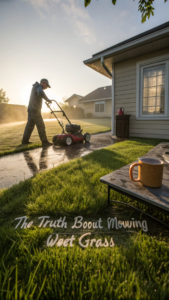 In today’s bustling cities, where green spaces are shrinking and skyscrapers dominate skylines, rooftop gardens have become an urban oasis for many. These elevated retreats not only enhance property value but also offer a sanctuary from the daily grind. Whether you’re dreaming of a lush escape or a space to grow your own herbs, learning how to design rooftop gardens can transform your lifestyle and your home.
In today’s bustling cities, where green spaces are shrinking and skyscrapers dominate skylines, rooftop gardens have become an urban oasis for many. These elevated retreats not only enhance property value but also offer a sanctuary from the daily grind. Whether you’re dreaming of a lush escape or a space to grow your own herbs, learning how to design rooftop gardens can transform your lifestyle and your home.
1. Understanding Your Rooftop Space
Assessing Weight and Structural Integrity
Before planting a single seed, it’s crucial to check your rooftop’s load-bearing capacity. Consult with a structural engineer to ensure your design is safe and compliant.
Evaluating Sunlight and Wind Patterns
Rooftop conditions can be harsh—full sun exposure, heavy winds, and temperature fluctuations are common. Track sun and wind patterns for a few days to plan plant placement effectively.
2. Choosing the Right Garden Style
Contemporary vs. Traditional Rooftop Gardens
Your design should reflect your personality. Modern rooftop gardens often use clean lines and minimalism, while traditional styles embrace rustic charm.
Eco-Friendly and Edible Garden Ideas
Consider growing vegetables, herbs, and pollinator-friendly flowers to make your rooftop garden both beautiful and sustainable.
3. Planning the Layout Strategically
Zoning: Leisure, Dining, and Greenery
Divide your rooftop into functional zones—seating, dining, and planting areas. This zoning ensures every inch serves a purpose.
Incorporating Multi-Level Designs
Add visual interest with raised planters, decks, or pergolas at varying heights.
4. Selecting Plants That Thrive on Rooftops
Best Low-Maintenance Plants
Opt for hardy species like succulents, lavender, or ornamental grasses that require minimal care.
Drought-Tolerant Plant Choices
Sedum, thyme, and yarrow are excellent choices for hot, dry rooftops.
5. Choosing Containers and Planters
Materials for Durability and Style
Fiberglass, metal, and ceramic are popular for their resilience and aesthetic appeal.
Size and Placement Considerations
Use larger containers to minimize watering needs and prevent plants from drying out too quickly.
6. Soil and Drainage: The Lifeline of Rooftop Gardens
Lightweight Soil Mix Recommendations
Use soil designed for containers—light, airy, and nutrient-rich. Avoid heavy topsoil.
Effective Drainage Solutions
Elevate containers slightly and add gravel layers to ensure proper drainage.
7. Irrigation Systems for Rooftop Gardens
Automated Drip Systems
Install drip irrigation to keep plants hydrated without daily effort.
Water Conservation Tips
Collect rainwater or use moisture-retaining soil additives to reduce water consumption.
8. Incorporating Seating and Furniture
Space-Saving Furniture Ideas
Foldable chairs, stackable stools, and built-in benches maximize limited space.
Weather-Resistant Materials
Choose materials like teak, resin, or powder-coated metal to withstand outdoor conditions.
9. Adding Shade and Privacy
Pergolas, Umbrellas, and Vertical Screens
Create intimate spaces using climbing plants, retractable awnings, or bamboo screens.
10. Lighting Design for Evenings
Solar vs. Electric Lighting Options
Solar lights are eco-friendly and easy to install, while electric lights offer more brightness.
Ambient and Task Lighting
Mix fairy lights, lanterns, and spotlights for both mood and functionality.
11. Eco-Friendly Features
Green Roofs and Rainwater Harvesting
Incorporate a green roof system to improve insulation and collect rainwater for irrigation.
Solar Panels and Sustainable Materials
Adding solar panels or recycled materials can further enhance sustainability.
Learn more about green roofs from Green Roofs for Healthy Cities.
12. Seasonal Maintenance Planning
Winterizing Your Rooftop Garden
Protect delicate plants with covers or move them indoors.
Pest Management Solutions
Opt for natural pest repellents and companion planting.
13. Budgeting for Your Rooftop Garden
Cost-Effective Design Strategies
DIY elements, upcycled containers, and native plants help keep costs down.
Prioritizing Investments
Spend more on infrastructure like flooring, safety rails, and quality furniture.
14. Legal and Safety Considerations
Local Building Codes
Check local regulations to ensure compliance with height restrictions, weight limits, and drainage requirements.
Child and Pet Safety
Install secure fencing and avoid toxic plants to create a family-friendly space.
15. Rooftop Garden Inspiration: Real-Life Examples
Small Urban Balconies
Compact yet cozy—tiny rooftops can still shine with vertical gardening and clever seating.
Luxury Rooftop Retreats
For those with larger budgets, consider outdoor kitchens, fire pits, and designer landscaping.
❓ Frequently Asked Questions
Q1: What are the best plants for rooftop gardens?
Succulents, lavender, ornamental grasses, and herbs like rosemary thrive in rooftop environments.
Q2: How do I protect my rooftop garden from strong winds?
Use windbreaks like tall plants, screens, or trellises to shield your garden.
Q3: Can I grow vegetables on my rooftop?
Absolutely! Tomatoes, peppers, lettuce, and herbs are ideal for containers.
Q4: Do I need planning permission for a rooftop garden?
In some areas, yes. Always check with your local authorities.
Q5: How do I handle drainage in rooftop gardens?
Ensure containers have drainage holes and use lightweight, well-draining soil.
Q6: What’s the average cost of building a rooftop garden?
Costs can range from $500 to $15,000 depending on size, materials, and features.
🌟 Conclusion: Your Dream Rooftop Garden Awaits
Designing a rooftop garden isn’t just about adding plants—it’s about creating a peaceful retreat, a place to unwind, and a green contribution to urban living. By following these 15 expert tips on how to design rooftop gardens, you can turn even the most modest rooftop into a magical escape above the city.





